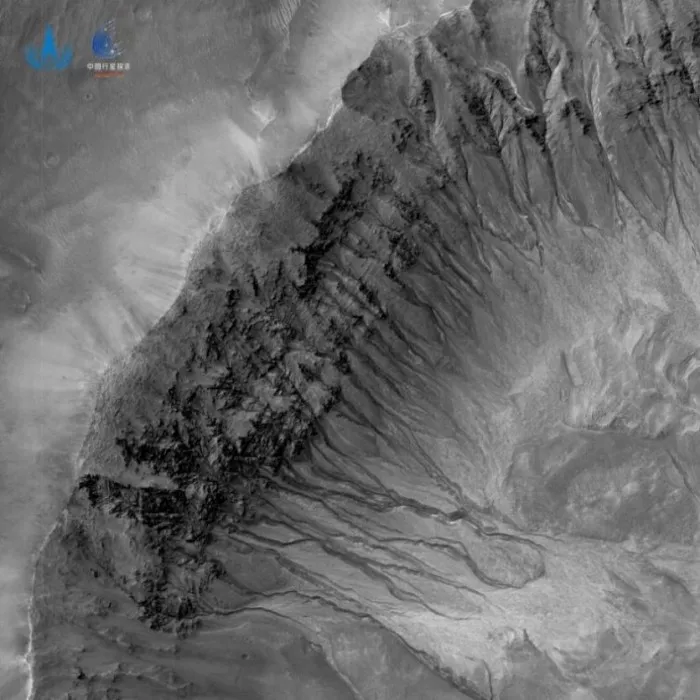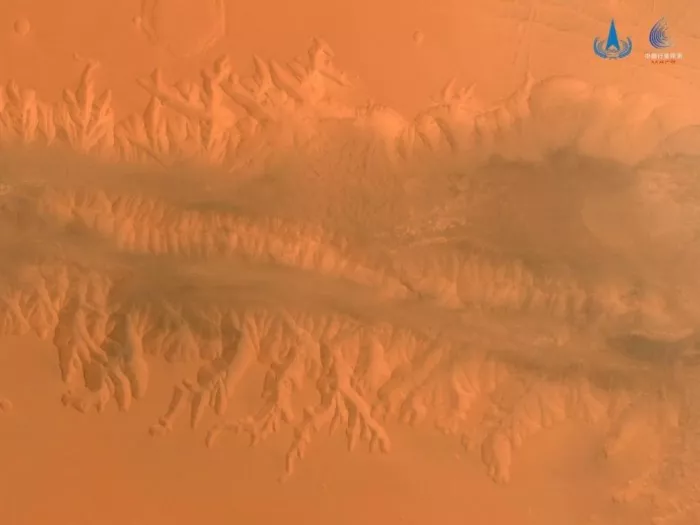The reporter learned from the lunar exploration and space engineering center of the National Space Administration that at present, the area where the "zhurong" Mars rover is located has entered winter, which is similar to our earth. After entering winter, the solar illumination altitude angle in the northern hemisphere has decreased and the illumination duration has been shortened. According to the measurement, the local noon maximum temperature of the rover has dropped to - 20 ℃, and the ambient temperature at night is below - 100 ℃.
In addition, due to the presence of dust weather, the light intensity is further weakened, affecting the power generation capacity of the solar wing battery array of the Mars rover. Recently, the engineering team adopted rotating the solar wing to adjust the illumination angle, reduce the daily work items and hours, and achieve energy balance.
The rotation cycle of Mars is close to that of the earth. A Martian day is only about 40 minutes longer than that of the earth. Therefore, Mars also has the same alternation of day and night and four seasons as the earth. The revolution cycle of Mars is about 687 days, that is, one Mars year is equivalent to 1.9 Earth years, which means that the average duration of each season on Mars is about twice that on earth.
In the next two months, the direct solar point will continue to move to the south of Mars and reach near the Tropic of cancer in mid and late July. At that time, the northern hemisphere of Mars will enter the coldest season of the year. In order to safely survive extreme weather such as Martian winter and dust storm, the "zhurong" rover has designed working modes such as autonomous sleep. After the energy is reduced to a certain extent, it will automatically enter the sleep mode, and then return to the normal working mode after the environmental conditions gradually improve.
On August 15, 2021, the "zhurong" Mars rover completed the established 90 Mars day patrol and exploration mission, and continued to carry out the expanded patrol and exploration mission. Its navigation terrain camera captured the image of rocks distributed near the impact crater on the surface of Mars on April 10, 2022 (323rd Mars day after landing).
△ images of rocks distributed near impact craters on the surface of Mars taken by navigation Terrain Camera
During the period of orbiting Mars, all seven payloads carried by the tianwen-1 orbiter were powered on to continue the global remote sensing exploration of Mars. The image of Mars triole crater with a resolution of about 0.8m/pixel taken by the high-resolution camera on April 17, 2022 shows the "seasonal slope pattern" on the pit wall. The local geomorphic image of mariner's Valley on Mars taken by the medium resolution camera on April 1, 2022 has a resolution of about 65 meters / pixel.

△ the "seasonal slope pattern" on the wall of Mars triolet crater photographed by high-resolution camera

△ local landform of mariner's Valley on Mars photographed by medium resolution camera
As of May 5, 2022, the "tianwen-1" orbiter has been in orbit for 651 days, 240 million kilometers away from the earth, and the "zhurong" Mars rover has worked on the surface of Mars for 347 Martian days, traveling a total of 1921 meters. The two orbiters have obtained about 940gb of original scientific data, and the operation is normal.